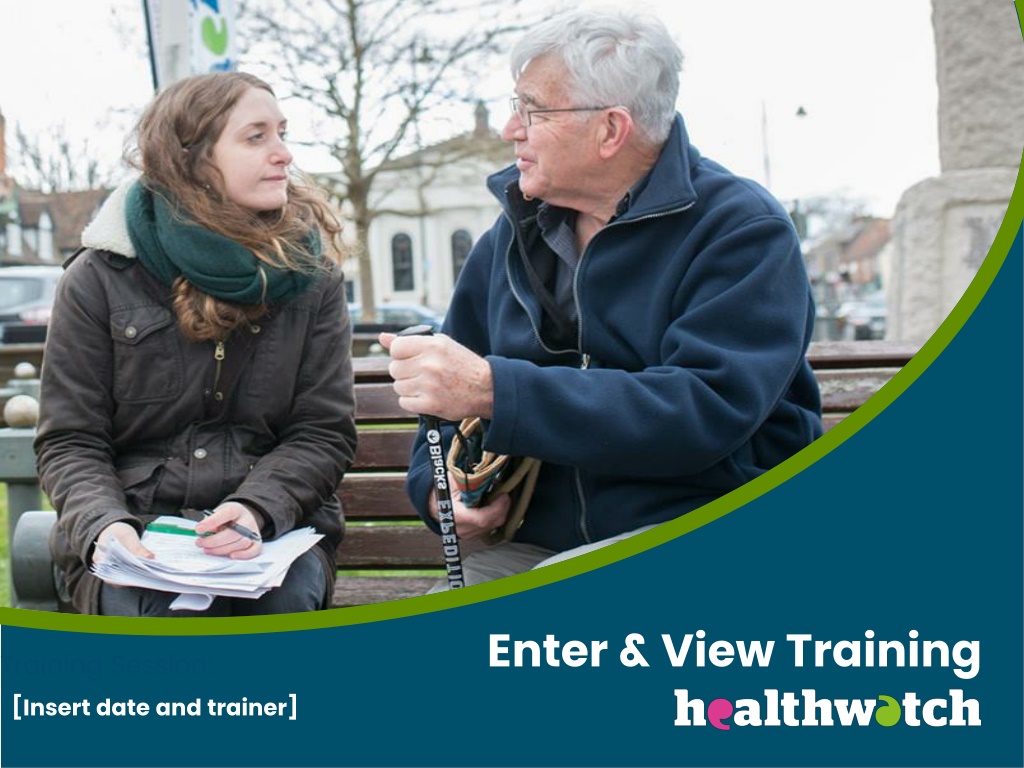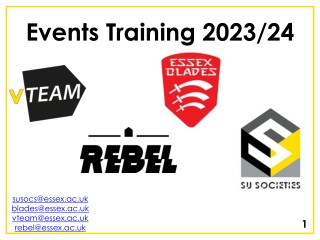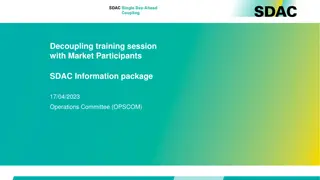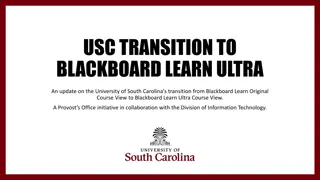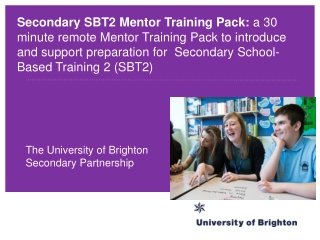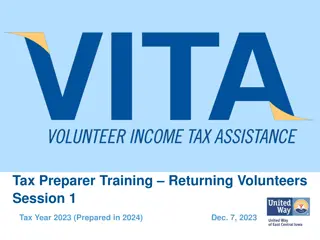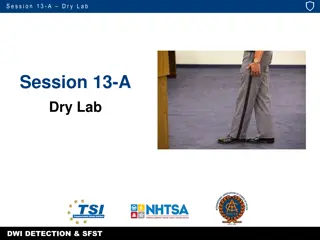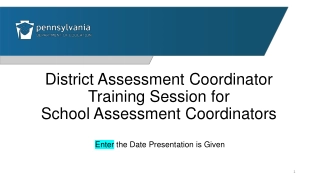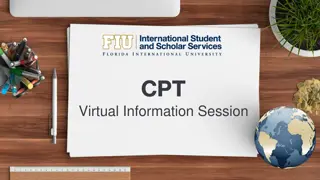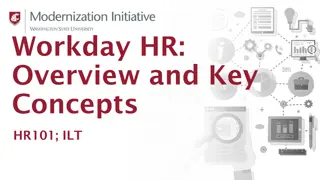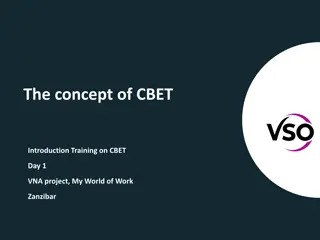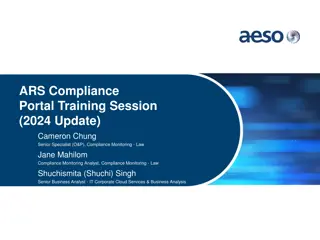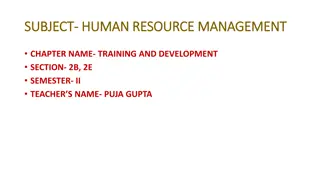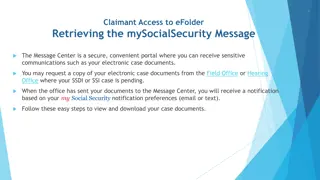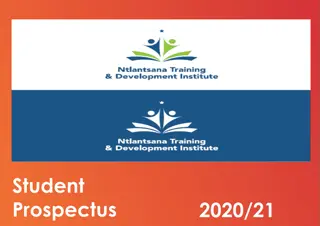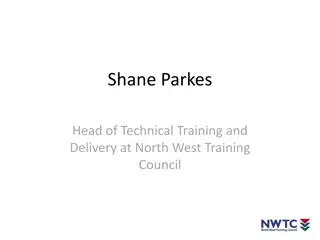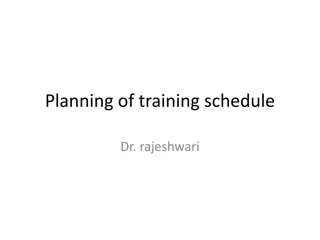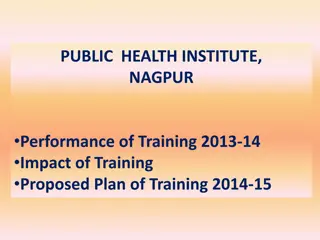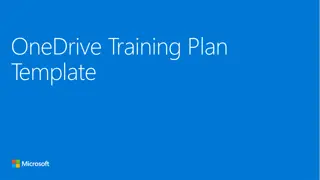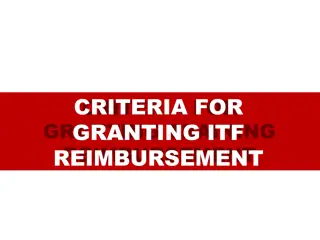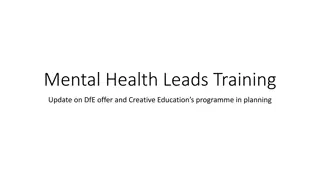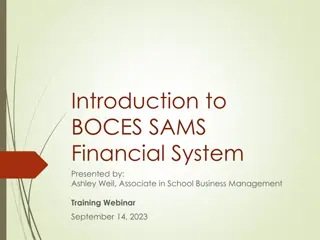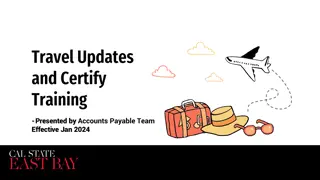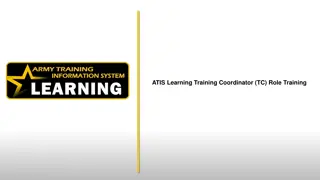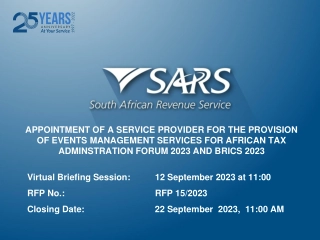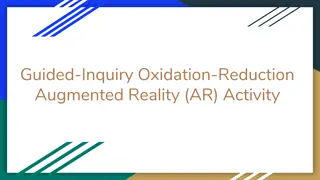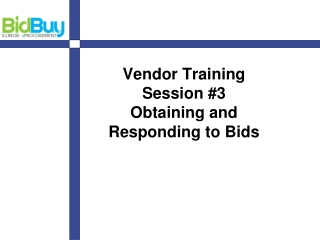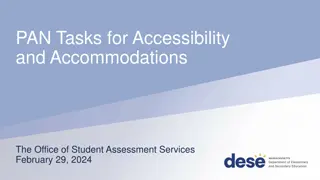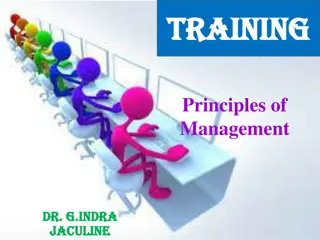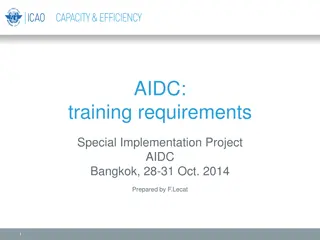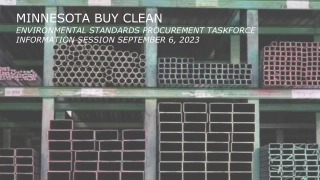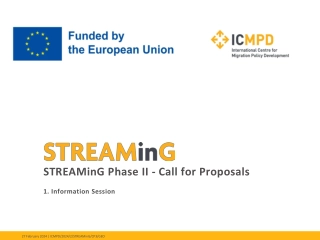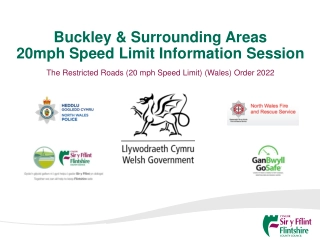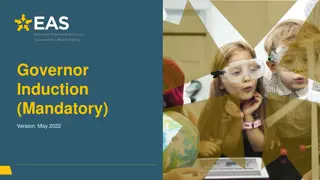Understanding Enter & View Training Session
This training session covers the aims, ground rules, importance, and procedures related to Enter & View visits in health and social care settings. Participants will learn about the legal framework, preparation, conducting visits, dealing with difficult situations, and reporting findings. The session emphasizes the value of gathering evidence-based findings, sharing good practices, and making recommendations for service improvement.
Download Presentation

Please find below an Image/Link to download the presentation.
The content on the website is provided AS IS for your information and personal use only. It may not be sold, licensed, or shared on other websites without obtaining consent from the author. Download presentation by click this link. If you encounter any issues during the download, it is possible that the publisher has removed the file from their server.
E N D
Presentation Transcript
Enter & View Training Training Session: [Insert date and trainer]
Before we start... Housekeeping Ground Rules Aims Introductions
Housekeeping Ground Rules Value everyone s opinion One person at a time Say if you don t understand Agree to disagree No jargon! Keep to time Make your point as short as you can We want to hear from everyone! Phones on silent Fire exits and alarms Toilets Lunch and breaks
Aim of this session By the end of today you will: Understand what Enter and View (E&V) is and is not Understand the legal framework of E&V Have looked at different situations Know when it is not appropriate to use E&V Know how to prepare and carry out a visit Deal with difficult situations Prepare an E&V Report Understand the importance of E&V Share and discuss examples of good practice
Introductions Please introduce yourself Tell us one thing you want to take away from the session today?
Setting the Scene This training session will cover before, during and after an E&V Visit Lots of Healthwatch have other training they provide Other training: Equality & Diversity Confidentiality (Data Protection) Safeguarding for Adults
5 Ws Approach is Enter & View is Enter & View NOT What? Who? can do an Enter & View visit? Where? can be Entered & Viewed? Why? is Enter & View important? When? is Enter & View not appropriate?
What is Enter & View? 1. Visiting health and social care premises to understand how services are provided 2. Finding out people s views 3. Finding out about the quality of services 4. Makingobservations(using all your senses) 5. Gathering evidence-based findings 6. Reporting findings good and bad 7. Making recommendations
What is Enter & View NOT? An inspection: Although others might think it is! A standalone activity: Enter and View is just a tool You should work with other organisations to help them improve It should not be a last resort It should not be the first choice It should be planned and have a clear reason
The Laws and Regulations behind E&V The Local Government and Public Involvement in Health 2007 (amended via the Health & Social Care Act 2012) [makes Enter & View possible] The Local Authorities (Public Health Functions and Entry to Premises by Local Healthwatch Representatives) Regulations 2013 [makes sure service providers allow Healthwatch entry to observe activities]
Who can Enter & View? Only Authorised Representatives can do visits and only when asked to do so by their Healthwatch All local Healthwatch organisations can have Authorised Representatives able to carry out visits Authorised Representatives should have been recruited, trained and have a current DBS check Each Healthwatch must publish a full and up to date list of its Authorised Representatives
Where can we Enter & View? Doctors Hospitals Day surgeries and clinics centres Care homes Dentists Opticians pharmacies and
Why is Enter & View important? Enter & View can: give seldom heard people a voice gather more detailed information help with joint working provide more evidence identify best practice
Exercise When would it not be suitable to Enter & View? Enter & View
When not to E&V When the law does not apply: 1. Compromises provision of a service 2. Compromises privacy or dignity of anybody 3. Authorised representative is not acting fairly 4. Authorised representative does not show ID 5. Children s social care settings 6. In buildings that are: A person s own home Used only as accommodation for employees Parts of care homes that are not shared Not providing care services Closed
Preparing for a Visit What information will you need before carrying out a visit?
Preparing for a Visit Why did Healthwatch decide to carry out the E&V? What will you be looking for? What pre-visit information will you send to the service? What do you already know about the service? (5 Ws) What views do people have about the service? What information is publicly available? Practical arrangements for the visit
Understanding the Purpose Each visit should have a reason. Providers will be more welcoming if they understand why you are there. Do not try to do too much in one visit. Visits should be done by priority. Involving other organisations can be useful. Healthwatch will decide where and who should visit. Makes writing the report easier.
Case Study Exercise Read through the case study and complete the boxes; (What? Who? Where? Why? When?)
What should a Code of Conduct look like?
Code of Conduct Dress suitably Do not accept gifts Introduce yourself to people Get people s agreement before talking to them Apply the Seven Principles of Public Life (the Nolan Principles): Selflessness Integrity Objectivity Accountability Openness Honesty Leadership
What can I do? Names are important Ask someone how they pronounce their name and practice! Pronouns are important Beingmisgenderedcan have a negative impact on your mental health. Ask someone (privately) how they prefer to be addressed. Try not to make assumptions. Remember, there is a difference between nationality and ethnicity. Ask: Where are you from? accept the answer Don t add the where are you really from originally? If you get it wrong apologise 26
Are microaggressions really that tiny? But where are you really from? Said to a British person of African descent who said they were British when asked their nationality. You might have trouble learning the new technology. Said to an older person when they have offered to help with a new work project. I expect your priorities will change now. Said to a pregnant woman at work by her manager before she went on maternity leave. 27
Remember: Equality - everyone gets a pair of shoes. Diversity - everyone gets a different type of shoe. Equity - everyone gets a pair of shoes that fits. Acceptance - understanding we all wear different kinds of shoes. Belonging - wearing the shoes you want without fear of judgement. 28
MakingObservations Enter & View is about Authorised Representatives seeing things for themselves
Good Listening Skills Can I just check something with you... Look interested Pay attention Don t make assumptions Encourage Listen Check it out Summarise
Listening Skills It is important for Authorised Representatives to have good listening skills LISTENING PRACTICE EXERCISE
Listening skills: remember! DO Encourage: Yes Tell me more Go on Please continue Nod Make sure Restate Summarise So, what you re saying is. DON T Judge Argue Evaluate Give your opinion Give advice
Asking Questions What is a closed question? What is an open question?
Questioning Skills Closed questions limit the answer Have you enjoyed your day? Yes Open questions encourage people to talk Tell me about what you ve done today... I arrived at 9 o clock and the first thing I did was...
Dealing with difficult situations In pairs think about when you have had to deal with a difficult situation and talk about how you dealt with it.
Six steps to managing difficult situations 1. Take a step back 2. Understand the other view 3. Think about your needs My Needs 4. Reflect 5. Share your learning 6. Move on
Exercise What information should be in an Enter & View report?
The Report Should Include... What you were told What you saw A wide range of views Good and bad Accurate information Sources of information Anonymous comments Anything you were unable to find out Useful comments and recommendations Do not include your own views unless you can back them up with evidence
After Visit Process 1 Meet as a team to talk about the visit Get more information from the provider if needed Get support from other organisations if needed
After Visit Process 2 Draft report written Draft report checked Draft report sent to provider for their comments within 30 days
After Visit Process 3 Follow up with provider if no comments within 20-30 days Report changed to include providers comments and recommendations they haveagreed to Final report shared with provider within 10 working days of receiving their comments
After Visit Process 4 Final report shared with everybody involved Report published on our website Visit closed
After Visit Process 5 Visit details logged with local Healthwatch and sent to Healthwatch England Visit reviewed & evaluated Follow up with provider if needed
Further Healthwatch Activity Healthwatch decides how to use information gained from a visit Findings could be: Reported to a statutory body such as the Care Quality Commission, the local Health Scrutiny Committee or Health & Wellbeing Board. Discussed at a steering/task group meeting. Publicised through a press release. Talked about with local groups or at a public meeting. Used to decide what future work is needed. Used to answer future consultations. This might mean another visit is needed.
Recap: What have we learnt? Enter & View is not an inspection Visits can only be completed by Authorised Representatives There are times and places when Enter & View is not appropriate There should be a clear reason for a visit
Recap: What have we learnt? Discussed how to gather information Understood how important observationsare Understood when to use open or closed questions Discussed dealing with conflict
Recap: What have we learnt? You must follow a process after a visit The report needs to have a wide range of accurate information including good and bad points Authorised Representative must not give their own opinions without evidence There are many things that can happen after a visit
Congratulations! Next steps: Please fill in the evaluation form to tell us what you think and hand it in to the trainer before you leave Sign off Healthwatch will need to sign you off as an Authorised Representative ID badges we will need a photograph for your badge DBS check to be completed First visit!
